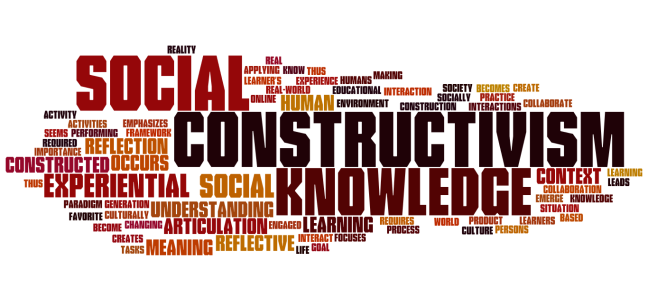Blog 4- Social Constructivism

Studies have shown that although many people call themselves constructivist teachers, they often distort the original notion simply because they want to be perceived as doing the right thing (Brewer, 2002). Constructivism is “a theory of knowledge … that states; individuals generate knowledge and meaning for the interaction between experiences and their ideas” (Howell, 2012, p. 22). Any subject area can be drastically transformed by adopting this theory as its philosophy basis. For example, a history teacher who has travelled and experienced several places can teach students content that is not only given to them in books, but also from their own experience. They can show pictures, a journal, or a short video from their travels to incorporate their knowledge and ideas with pre-existing knowledge to engage and enhance student learning.
Howell (2012, p. 28) states that “constructivism was introduced as a theory of learning based on the premise that knowledge exists in the world rather than in the head of an individual”. However, learning and knowledge can be seen in endless ways; in diversity of opinions, in non-human appliances, currency in the intent of all connectives, in decision-making and many more (Howell, 2012).
Teachers must ensure that their constructivist learning includes a focus on process, the exchange of different point of views, and problem solving (Brewer, 2002). As a result, students will become more engaged with new ideas by encouraging them to discuss several topics within a particular subject area. I also believe that social interaction is very important, for it enables students to think independently and come to their own conclusions from group activities and independent research. This leads to social constructivism, which has been adopted into learning by teachers and educational researchers. Social constructivism suggests that social interaction precedes the development of knowledge and understandings, which is in fact the end product of socialisation and social interaction (Howell, 2012). If teachers are able to incorporate effective constructivism into their everyday learning, student performance will increase, which will not only benefit the students and their expansion of knowledge, but also the teacher for they will be able to push students to their full potential.
In the future as a teacher, I will use social constructivism through the use of engaging problem-solving mathematic games. These games will help the students to understand a high standard of mathematics while having fun and interacting with peers in competitions by having the highest score. Also, I will share my own problem-solving methods and tactics in addition to what is taught in the text book, so students can benefit from these two different sources of knowledge.
Multimedia - Online Games
The two links below are to online game websites, where students can learn new content and activities while having fun. The first link go to a website where teachers can create their own educational games for their students, whereas the second link is to a BBC website called Interactive Content, where students can play educational games, do virtual tours of various buildings and places, create timelines and much more. Then the image was created in wordle showing all the words that can be linked to social constructivism.
Multimedia References
- Online Game; make your own educational game https://mobilelearningacademy.org
- Online Interactive Content https://www.bbc.co.uk/history/interactive/
-
Social Constructivism [Image]. (2012). Retrieved 25th May, 2013, from https://socialmedia4444.wordpress.com/social-constructivism-social-media/social-constructivism/
